
During and after the war, Armenian sources spread false news, fabricated lies about the alleged fighting of foreign mercenaries in Azerbaijan, and submitted reports to some organizations accusing Baku. Fake reports about the alleged fight of foreign mercenaries and terrorists on Azerbaijan's behalf are given to foreign journalists, human rights activists and heads of organizations through social networks. Such reports are constantly disseminated. One such piece of information was shared by Alexander McKeever, an Afrin-born, STJ Syria, Bellingcat, PopularFrontCO researcher, MA student, and New York-based Twitter user on November 20, 2020.

In his post, Alexander McKeever claimed to have found new facts about the gathering of Syrian fighters in the Jabrayil district of Azerbaijan.
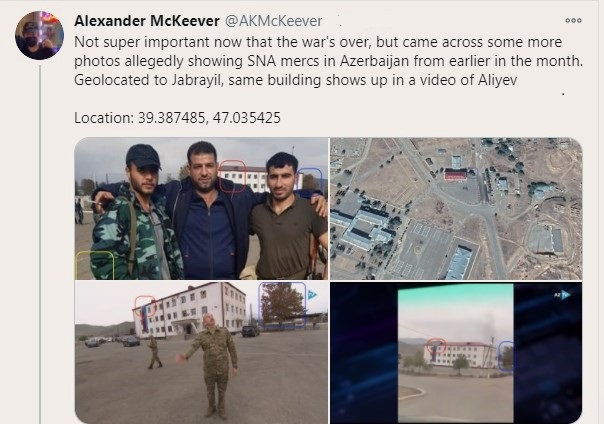
Alexander McKeever added several photos in the comments section of the tweet.
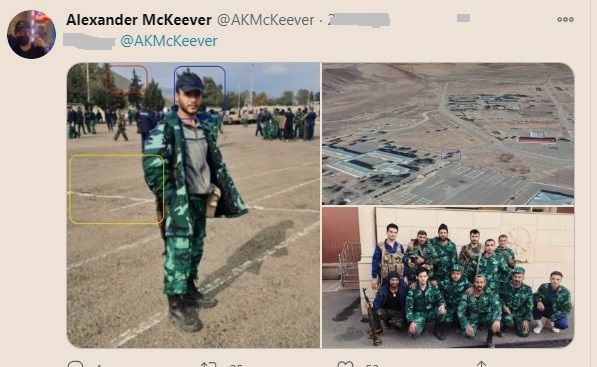
It was these attachments that exposed Alexander McKeever. We will talk about this in detail later. For now, let's focus on what Alexander McKeever shared and what he was interested in.



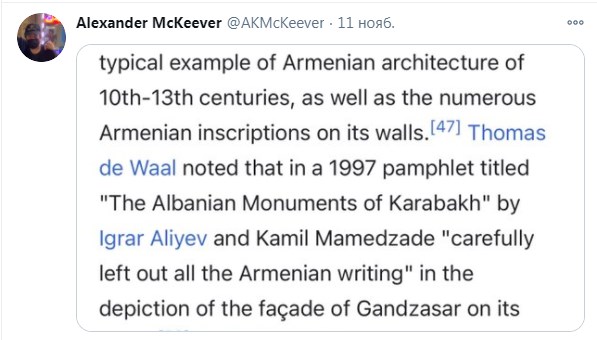
Who were the fighters whose photos were shared, and did they really fight on the Azerbaijani side in Jabrayil?
McKeever and his team investigated and found that the soldiers were namely here.
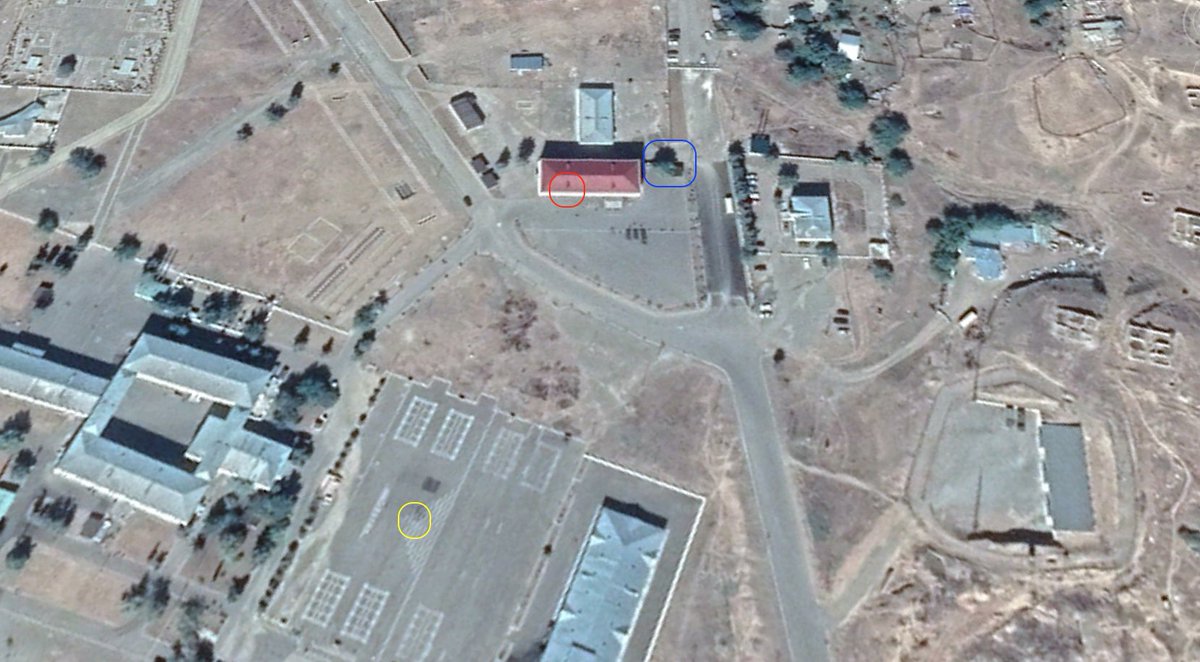

It was the yard of a military unit built by Armenians during the occupation of the Azerbaijani city of Jabrayil.
The soldier was standing exactly there.
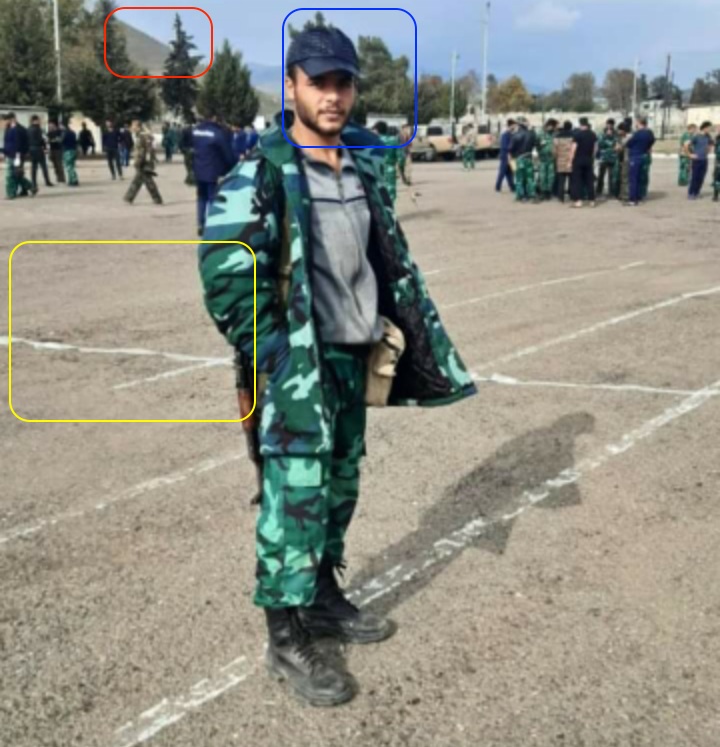
It is interesting when the photo was taken. To learn this, you need to use "sun and shadow," one of the fact-finding techniques. Because in this photo, the shadow of the soldier is clearly visible. The investigation revealed that the soldier was standing 150-200 meters from a red-tiled building with a white (perhaps yellow) facade, which we found using Google Earth. When you look at the map, the building on the soldier's left is to the north (in the screenshot, the place marked in red shows the point where the soldier is standing, and the other sign shows the compass).
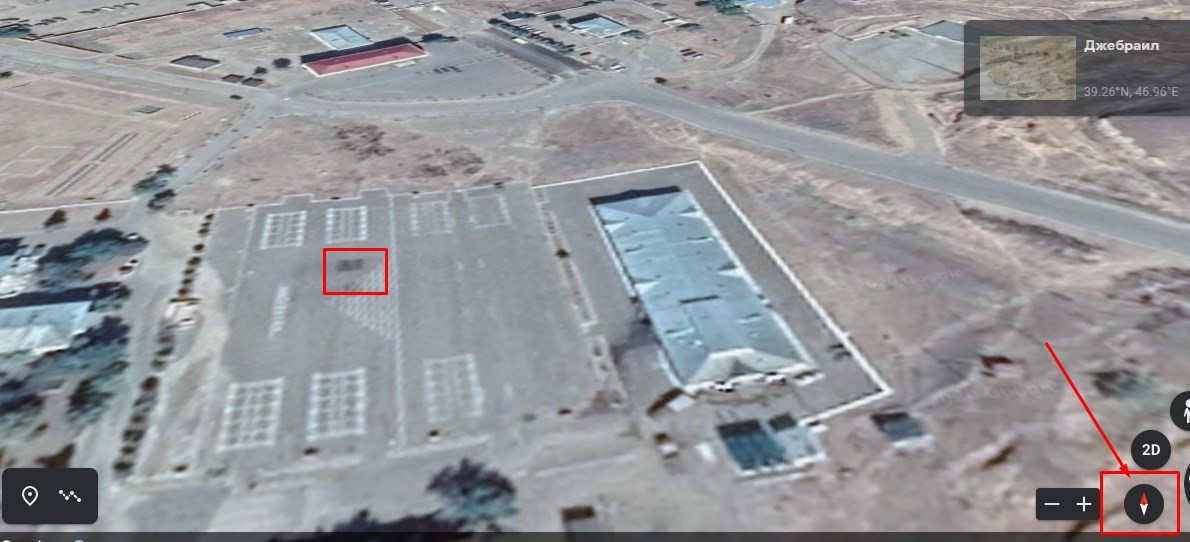
That is, the sun is shining from the right side of the soldier. It is a considerable fact. Let's continue: to fully apply the technique, we need to calculate the soldier's height.
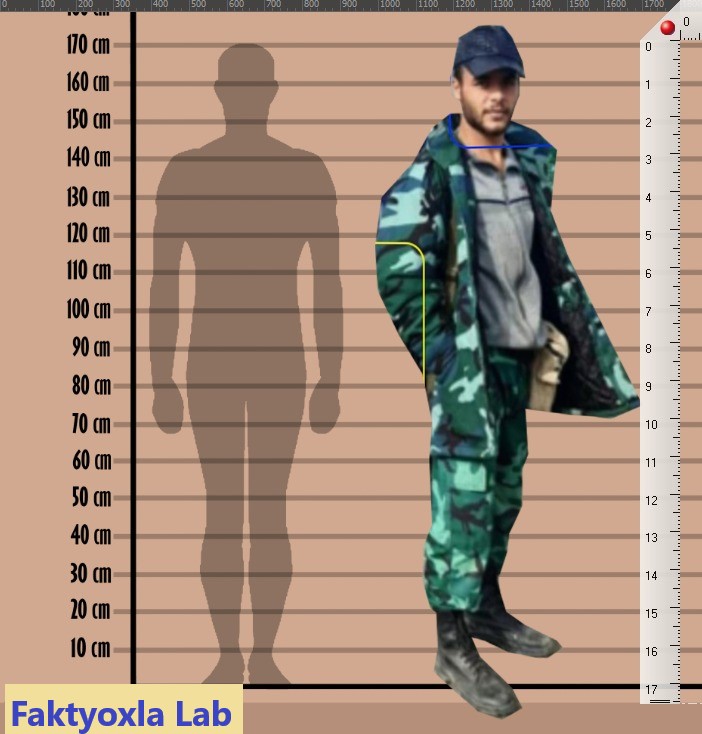
Using this technique, we determine that the soldier seen in the photo is 173 cm tall. Then we need to find the length of the shadow.
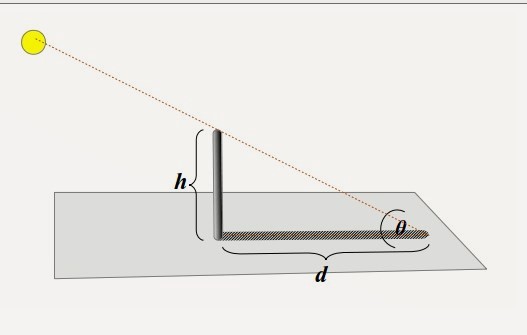
Here h is the soldier’s height, and d is the length of the shadow. After determining that the sun’s angle of incidence is 47 degrees, we do the calculation using the simple trigonometry formula used in high school; d = h x tg47. Thus, the shadow’s length is equal to the product of 173 cm (the soldier’s height) and the tangent of the angle (tg47 ° = 1.07237) - 185 cm (1.85 meters). So why do we need the length of the shadow?
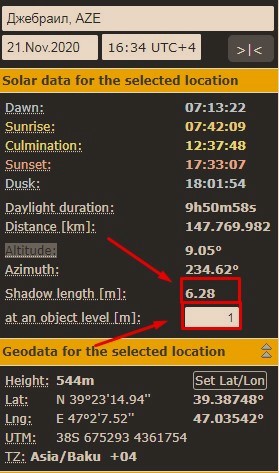
Special programs created for such measurements calculate the shadow length of objects of any size, along with the trajectory of the sun's movement along the rising and setting ellipse during the day. For example, on November 21, 2020, at 16:34 in the center of the Jabrayil district, any object with a height of 1 meter had a 6.28 meters-long shadow, depending on the sun’s angle of incidence.
Considering these points (the soldier’s height, length of the shadow, cardinal directions), we obtain the following result by entering these indicators in the appropriate cells in the shadow measurement program.
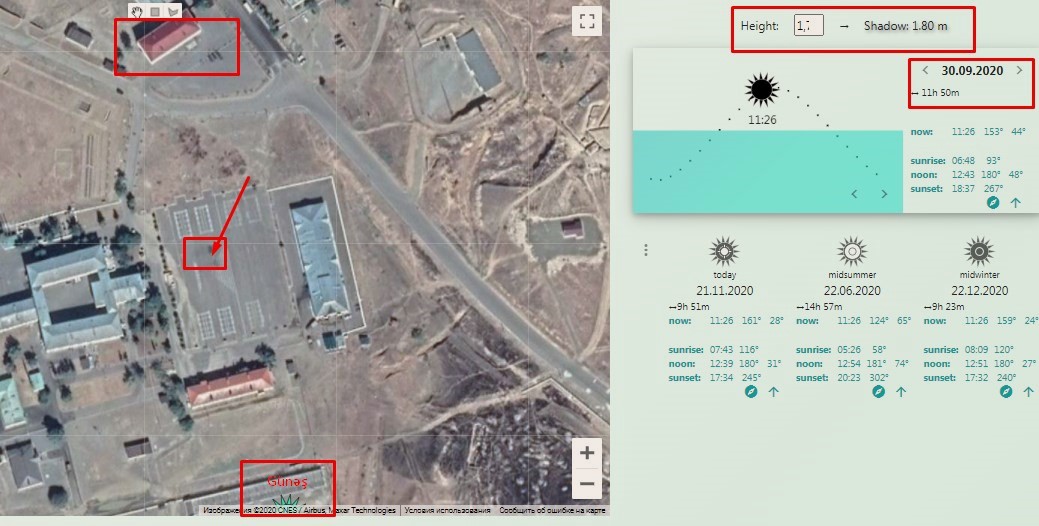
If we pay attention to the screenshot, we can see that the mentioned building (remains in the north), the place where the soldier was photographed (marked), the current location of the sun (shown in green), the height of the soldier (1.73 m) and the shadow (1.80 m). The indicator is displayed in decimals, not in detailed figures. Therefore, it appears 1.80, not 1.85, and at that moment, the time was 11:26.
And most importantly, the date: September 30, 2020.
Azerbaijan liberated Jabrayil on October 4, 2020. So, it turns out that the soldier standing there has nothing to do with the Azerbaijani Army, the Azerbaijani side.
By the way, information about the weather is also a method used in fact-finding. On September 30, 2020, according to the world-famous Accuweather website, the temperature in Jabrayil was 24 degrees Celsius.

To confirm this fact, let's look at one of the photos shared by the researcher. In the photo, one of the soldiers is wearing a short-sleeved shirt. It should not be overlooked that one is in a soldier's jacket and the other in a summer shirt.
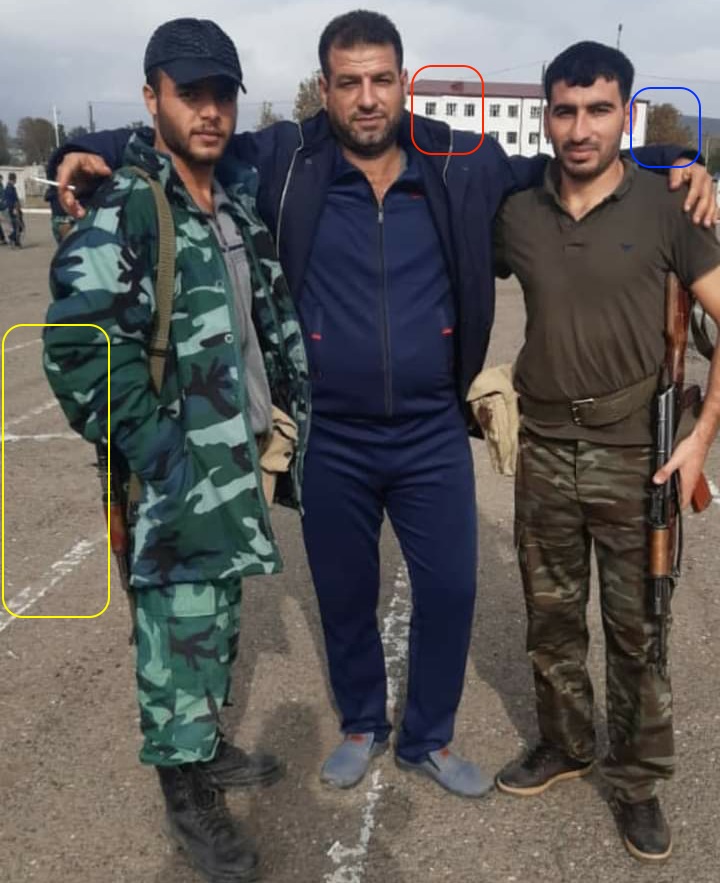
What else can prove that these mercenaries fought on the Armenian side??
Let's pay attention to the photo:
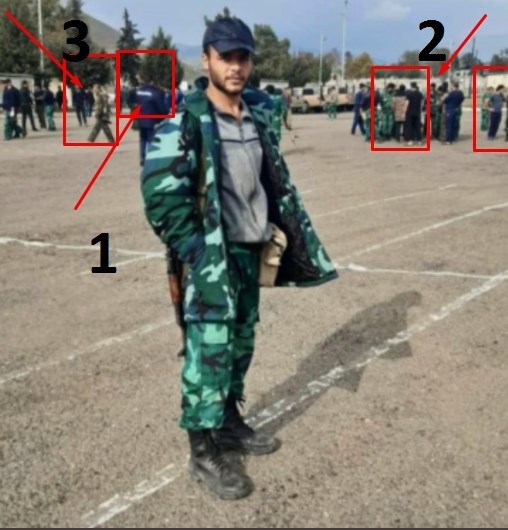
The person marked with the number 1 on this screenshot is wearing a military uniform of the Armenian engineering and fortification troops. The writings in Armenian were hidden in the photo. To confirm this, it is enough to look at the forms of the Armenian forces.
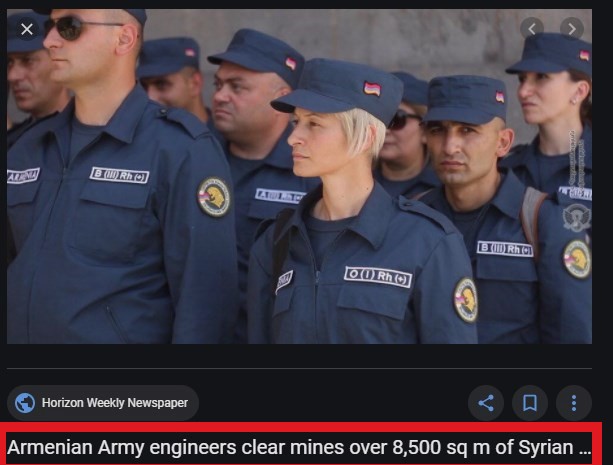
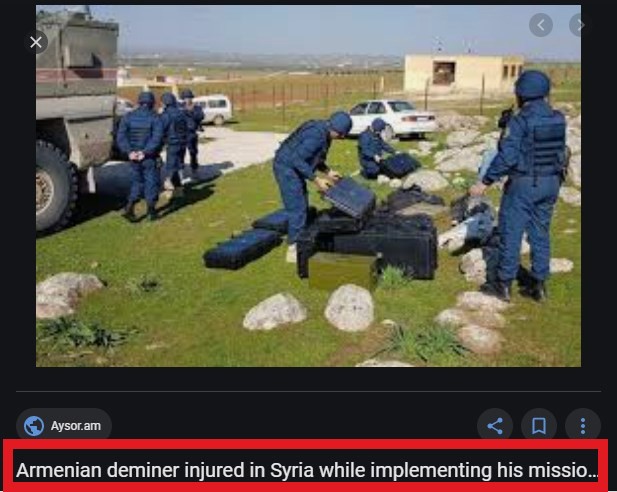 /
/
The other two notes (2 and 3) show people in the uniforms of Armenian soldiers. Probably no one would argue about the clothes of the soldier in photo 2.
Another fact that confirms the presence of mercenaries left for Armenia from Syria was confirmed by a report of the Syrian Observatory for Human Rights (SOHR) on October 1, 2020. "Reliable sources told SOHR that Syrian fighters of Armenian and Arab origin left for Armenia to fight against Azerbaijan," the SOHR said.
Let's approach it with another logic. In this photo, it is noteworthy that there are more people in civilian clothes. Imagine that Azerbaijan liberated Jabrayil in a military operation, and civilians roam freely in the yard of that military unit. Of course, such a thing is impossible. Azerbaijan has a regular army. No one was allowed in the fighting zone except the military. Even unlicensed service members were stopped at military police posts.
And let's look around again. It is a known fact that the Azerbaijani Army destroyed all military facilities during attacks. These photos do not show any damage, injuries, or battlefield. It means that the combat operations had not reached these areas when the photo was taken.
Probably, it is better not to touch on the claim that the fighters, allegedly brought from Syria, were wearing the uniforms of the Azerbaijani Border Troops. We remember the photo that the Armenian Defense Ministry spokesperson Shushan Stepanyan shared from a meeting of then-Defense Minister Davit Tonoyan with the soldiers of the Armenian units in Lachin; she deleted it later.

And finally: let's watch this video shared on YouTube on January 21, 2021.
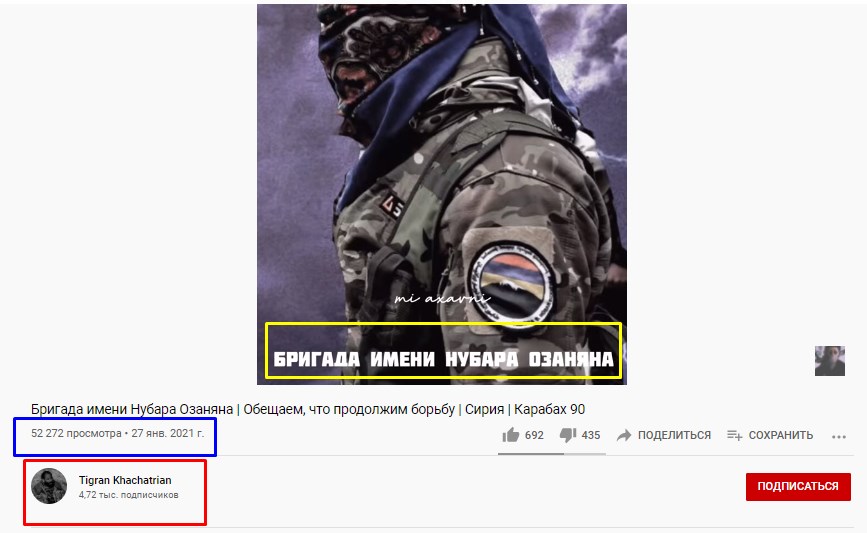
This video is about an Armenian brigade named after Nubar Ozanyan fighting in Syria. This brigade was established on April 24, 2019, in the territory controlled by the YPG in northern Syria on the 104th anniversary of the fake Armenian genocide.
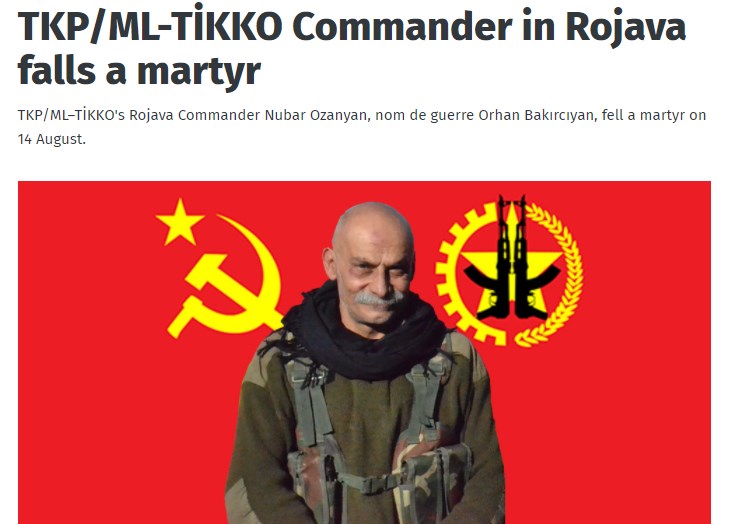
A Turkish Haber7 correspondent Taha Tagli reported that the brigade consisted of 3 battalions (750 Syrian Armenians) was named after YPG terrorist Nubar Ozanyan. Nubar Ozanyan was killed in 2017 during anti-terrorist operations by the Turkish Armed Forces. He took part in the First Karabakh War and was a participant and leader of terrorist attacks against civilians.

Those who watched the video carefully and noticed this fragment would undoubtedly recognize the person whose photo we shared many times throughout the article. We guessed it right, it is the same person.
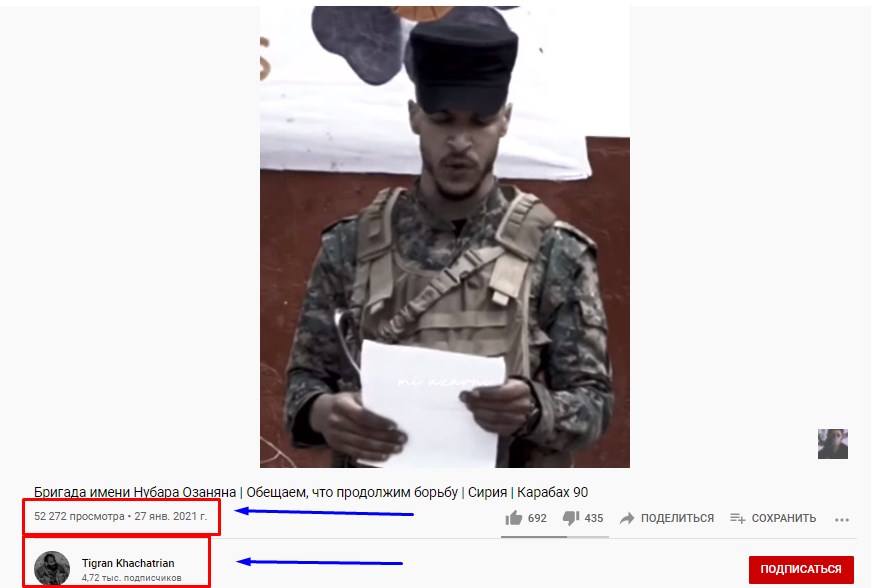
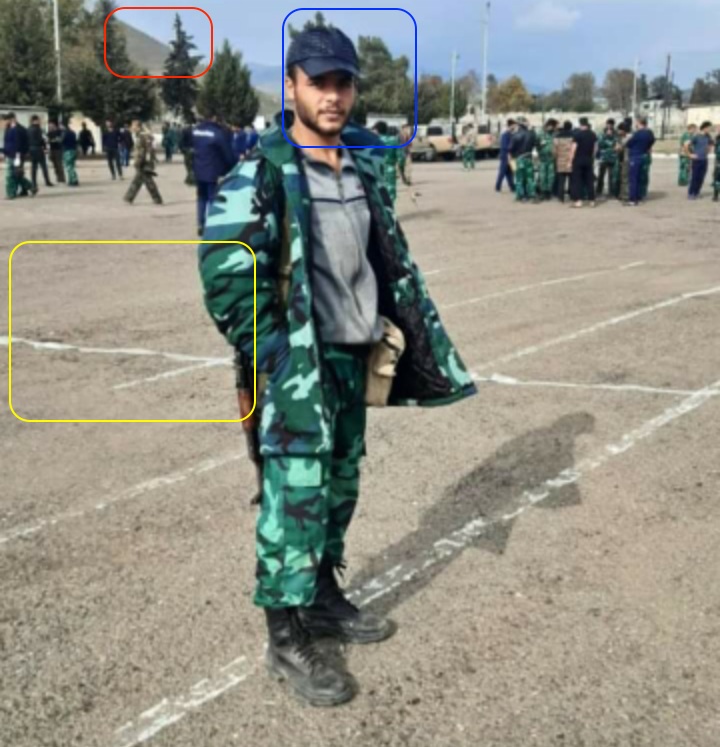
Conclusion: The Armenian report that Azerbaijan once again used foreign mercenaries to fight on its side is false. The persons presented by Armenians, as well as journalists, bloggers, and human rights activists under the influence of the Armenian lobby, as Syrian mercenaries fighting on the Azerbaijani side were members, mercenaries, and soldiers of the YPG, PKK, ASALA, Nubar Ozanyan, and other terrorist groups. These are the links to the videos taken during the brigade’s establishment and training.




















